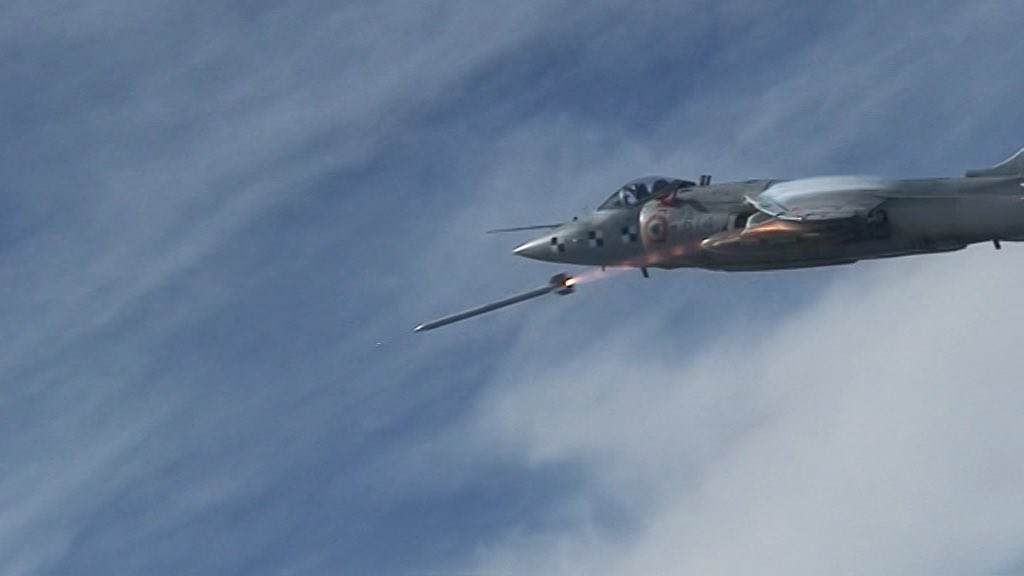
That’s an Israeli Derby missile tearing off from an Indian Navy Sea Harrier as part of a clear separation test. Taken during the aircraft fleet’s ‘LUSH’ upgrade program, the picture popped up on social media yesterday courtesy a veteran navy pilot involved in the upgrade and testing. The fascinating photo captures the jump jet pulling 4.75 g. As the pilot says, the aircraft pulling upward is clear from the vortices above the wing and the fact that the missile appears to be tearing downwards as the aircraft pulls away.
The photograph afford us a quick opportunity to look back at the upgrade program at a time when the Indian Navy’s Sea Harriers are popping up around the country as legacy displays four years after they were retired following 40 years in service. Like this one, the last Indian Sea Harrier that flew, on display in Mumbai’s Bandra suburb since last month:
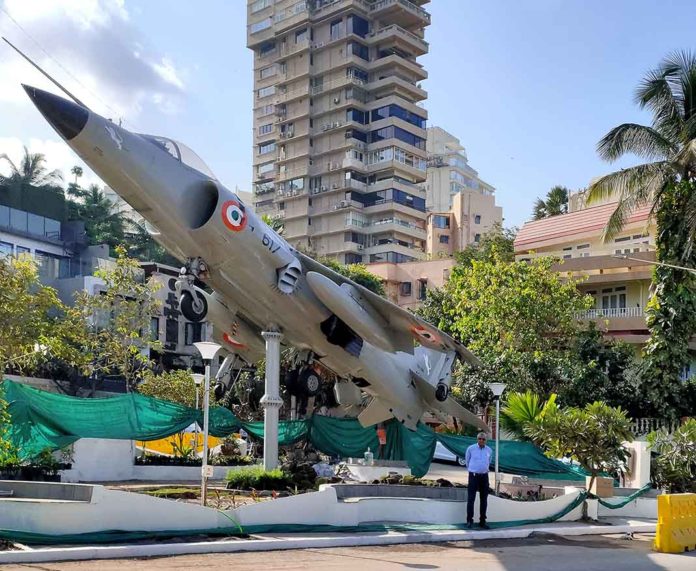
The Limited Upgrade Sea Harrier (LUSH) program commenced in 2006 after a slew of attempts to beef up the fleet’s capabilities fell by the wayside to other acquisition priorities. While the navy had wanted a more expansive set of enhancements, it had to settle for a ‘limited’ souping up, focused on its sensors and anti-air weaponry — and nothing else. The navy team shaping the upgrade therefore had zero elbow room. It was with some difficulty that the MoD was persuaded that giving the Sea Harrier a beyond visual range air to air missile would need a parallel replacement of the aircraft’s Ferranti Blue Fox air intercept radar.
While the door was strictly closed to all other elements that the navy might have originally anticipated in a mid-life upgrade, the addition of a video recorder and an air combat debrief system were the two relatively simpler systems that the MoD permitted into the LUSH package.
Once final, the LUSH program’s goals were sharp and well-defined: it was to give each of the navy’s Sea Harriers a beyond visual range look down/shoot down capability where (a) single aircraft could be launched to intercept medium range aggressors armed with anti-ship missiles, and (b) single or two aircraft in a Combat Air Patrol (CAP) profile could engage anti-ship missile armed strike aircraft escorted by fighters deploying BVR weaponry.
Crucially, in addition to these two mission profile requirements, the navy was sure it wanted to squeeze every drop it possibly could out of the new BVR capability it would fit into its Sea Harriers, and wished to test weapon launch at high altitudes and high airspeeds to shore up kinematic launch ranges. Enhanced situational awareness was a needs-no-mention element in the effort, leading to a strenuous rejig of the Sea Harrier’s cockpit.
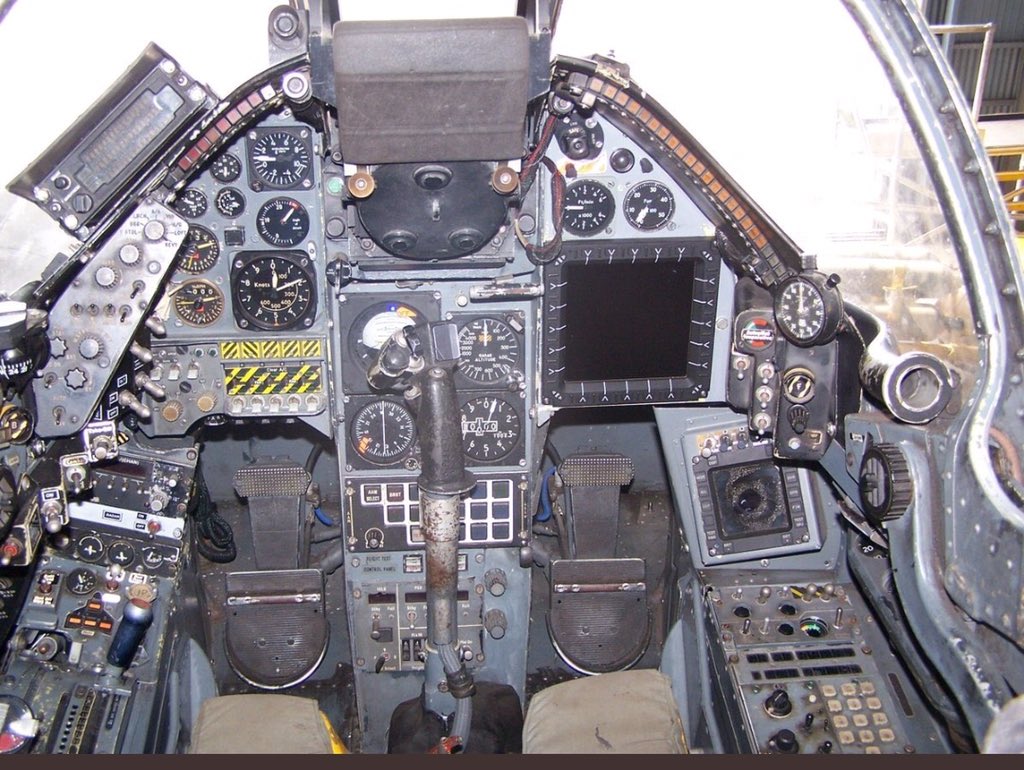
With requirements defined and finances sanctioned, the navy immediately hit its first major challenge — the integration of Rafael Derby missiles onto the Sea Harrier. With no detailed Sea Harrier design data, the navy went to Israel Aerospace Industries (IAI) with well-thumbed British Aerospace operation and maintenance manuals. But it was when the Indian test pilots saw how big the Derby looked on the Sea Harrier’s wing that nerves were first put to the test. The navy was aware that the integration of two Matra Magic missiles on British Sea Harriers had left designers with no choice by to down-dial the aircraft’s envelope. Not only was the Derby a heavier and bigger missile, but the navy was heading into the upgrade program with no leeway for envelope reduction. There simply was no give.
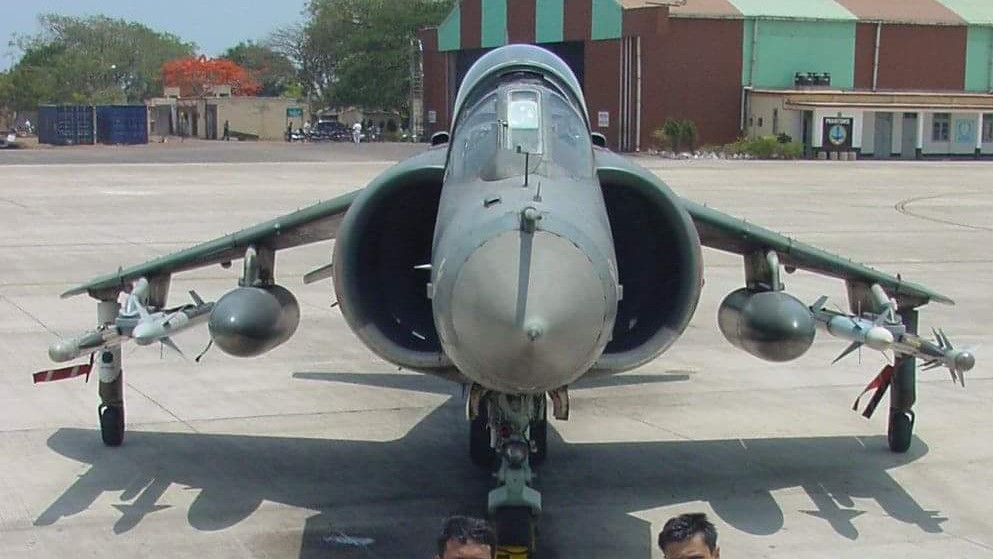
With the Derbies finally integrated, the next big challenge was carriage trials and flutter tests. Since the navy needed to conduct each flutter test with the same fuel levels, it became clear that conventional refueling on the ground would mean a grueling number of sorties just to meet a handful of test points. In came the Indian Air Force’s Il-78 tankers, the first time they would be deployed in an upgrade test effort of the kind in the country. With air to air refueling, the Derby-armed Sea Harriers were able to tick off test points quicker. Every time they needed to return to a particular fuel level for a differently configured flutter test, they’d peel away to gas up from an awaiting Il-78. Pilots remember how momentous these flights were for how much they revealed the value of the tanker fleet. Many sorties lasted well over 4 hours with at least six aerial refuelings.
Energised by progress, the Indian Navy team was given all-access to configure and fine tune the integration of the Derby and the Elta EL/M-2023 multimode radar that had been chosen to replace the Sea Harrier’s Blue Fox. The team inputted widely, leading to a radar system that had an emphasis on graphical and geographical presentation rather than masses of text. The navy team and Elta would work long hours to ‘Indianise’ the sensor system. Once integrated, the Harriers would fly sorties against all manner of airborne ‘targets’, including IAF MiG-21s, naval Do-228s, civil airliners quietly making their way to their destinations, naval Chetaks — but none more than HJT-16 Kirans.
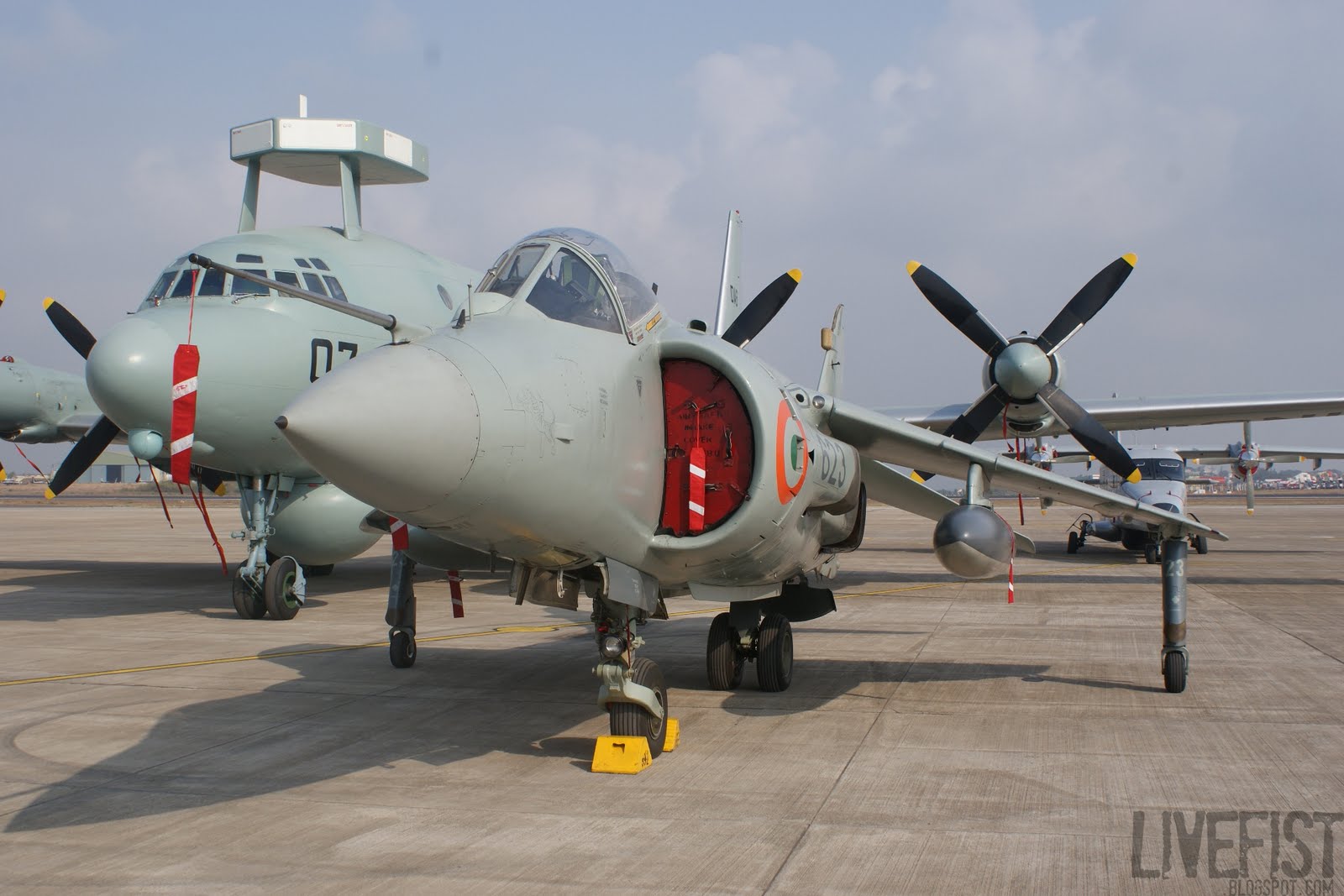
The small number of LUSH Sea Harriers would see active service for a little less than a decade, but is still seen as a sharp, surgical upgrade with very limited resources. And in case you’re wondering, none of the kit acquired for the program has gone to waste. The Indian Sea Harriers retired from service in March 2016. The Derby missiles went to the LCA Tejas program, while the EL/M-2032 radars are now being used on Indian Navy Dorniers.

I am wondering if any of the old “Blue Fox” radars were snapped up by another country? I’m told that just the sound of these things beginning to search scared away Argentine pilots quickly, back during the Falklands conflict.
They lied to you, the Argentine fighters did not have RWR to detect the Blue Vixen. In addition, the FAA and the Navy launched 600 missions over the Royal Navy, and only 27 managed to be intercepted by Sea Harriers.
Finally a beautiful gift for indian navy. Kudos for writing this.